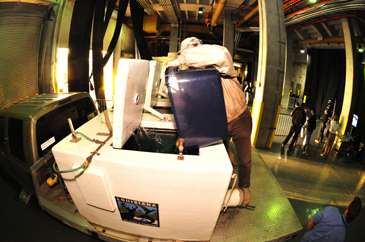
Since spearheading the "Don't kill your catch" effort decades ago, B.A.S.S. has prided itself on being a leader in conservation efforts. Images of 20- and 30-bass stringers draped across boats proved to be a bit much for early conservationists, so a system of holding tanks was devised and time out of the water was limited.
For this Classic, B.A.S.S. has teamed up with the Coastal Conservation Association of Louisiana, the Louisiana Wildlife Federation and the Louisiana Department of Wildlife and Fisheries to bring awareness to the "vanishing paradise" that is the marshes of south Louisiana.
Melissa Kaintz, an Inland Fisheries Operations manager with the LDWF, says the goal of the department's presence is threefold. "We're here for a couple of reasons. We have several biologists on hand to spread information about our resources and to get people to come fish in Louisiana," Kaintz said. "But our main goal is to keep the fish from getting too stressed and to reduce mortality.
" If you're a bass in the marshes of Louisiana, there's a target on your back for the next two days. If you do happen to get caught, here's what you can expect.
- Do your best to get unhooked.
- When unsuccessful, receive another lip piercing courtesy of a culling tag.
- Hang out in a livewell with some friends for a spell.
- Enjoy the ride to the New Orleans Arena until it's your time to shine.
- Get hoisted out of a mesh bag and into a photo shoot in front of a cheering crowd.
- Then you'll be placed back into the bag and passed into a hole beneath the scales to an idling LDWF truck full of water.
- Enjoy yet another truck ride to a canal that leads to Lake Cataouache where you'll be released to live out the rest of your existence.
Doesn't sound too bad, right? Thanks to the efforts of the anglers, B.A.S.S. and the LDWF, each and every fish caught during the Classic will live to be caught another day.
